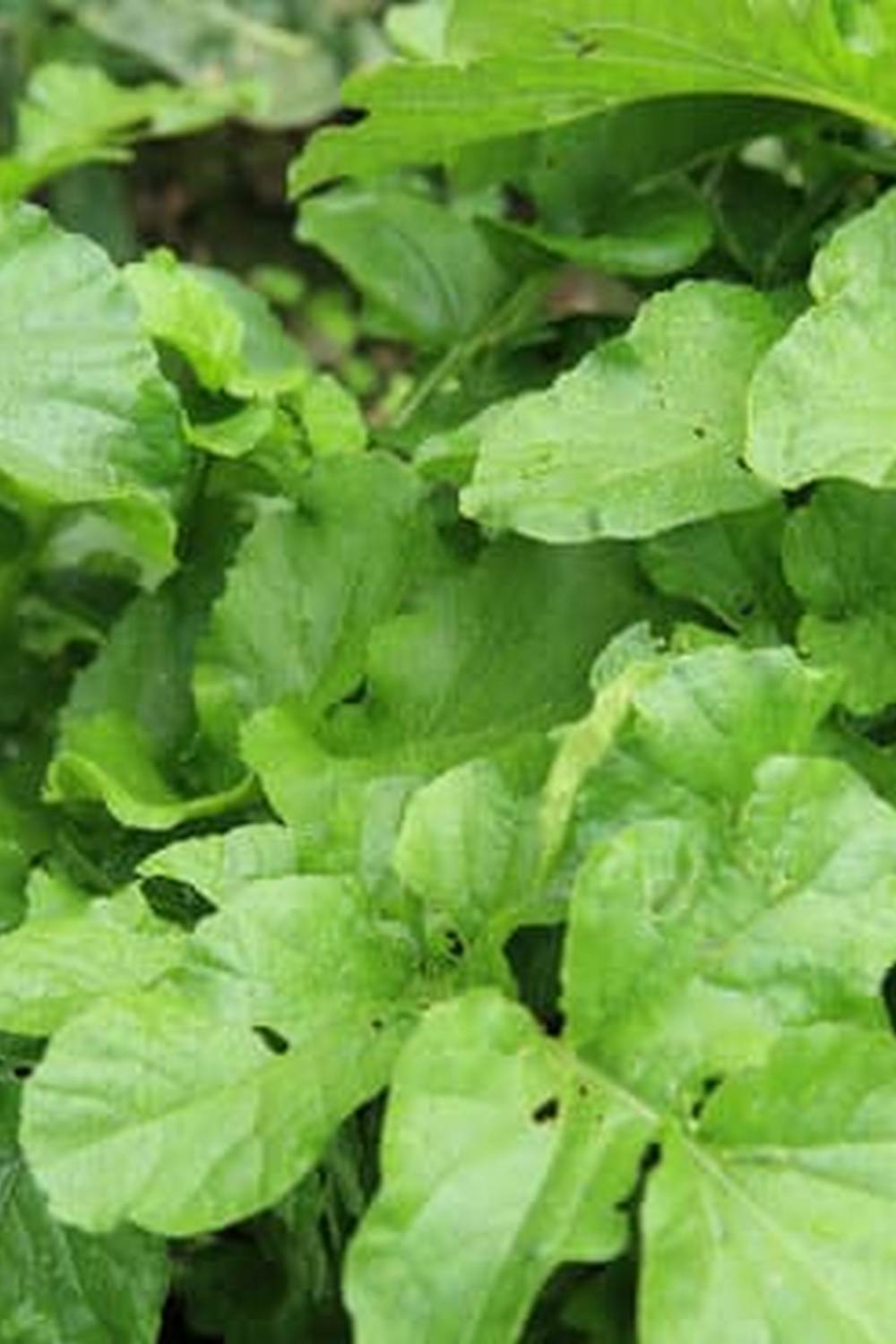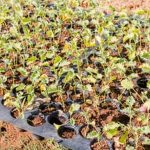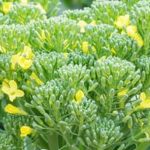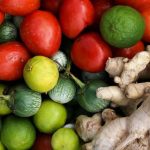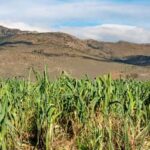The Pacific Northwest is renowned for its lush green landscapes and temperate climate, making it an ideal region for gardening. In this article, we will explore the unique conditions that define Pacific Northwest gardening and provide valuable insights into growing vegetables in this environment. From understanding the specific soil and fertilizer needs to mastering pest management and harvesting schedules, we will cover everything you need to know to successfully grow a bountiful vegetable garden in the Pacific Northwest.
The climate of the Pacific Northwest is characterized by mild temperatures, abundant rainfall, and a long growing season, creating an optimal environment for a wide variety of vegetables. However, the region’s distinct weather patterns and soil composition present both challenges and opportunities for gardeners. Understanding these factors is essential for successful vegetable gardening in the Pacific Northwest.
In the following sections, we will delve into the best vegetables for Pacific Northwest gardening, planting and harvesting schedules, soil and fertilizer requirements, pest and disease management, container gardening techniques, sustainable practices, as well as success stories and tips from local gardeners. Whether you’re a novice or experienced gardener, this comprehensive guide will equip you with the knowledge and skills needed to thrive in Pacific Northwest vegetable gardening.
Best Vegetables for Pacific Northwest Gardening
When it comes to Pacific Northwest gardening, choosing the right vegetables is crucial for a successful harvest. The region’s unique climate and growing conditions can pose challenges, but there are several vegetables that thrive in this environment. Whether you’re a seasoned gardener or just starting out, here are some of the best vegetables for Pacific Northwest gardening.
Leafy Greens
Leafy greens such as kale, spinach, and lettuce are well-suited for the cool, moist climate of the Pacific Northwest. These vegetables can be planted early in the season and will continue to produce throughout the spring and fall. Their relatively low maintenance requirements make them an excellent choice for beginner gardeners.
Root Vegetables
Root vegetables like carrots, beets, and potatoes are also well-adapted to the Pacific Northwest’s mild weather. They thrive in well-drained soil and can withstand cooler temperatures, making them a reliable choice for local gardeners. With proper care and attention to soil quality, these vegetables can produce plentiful harvests.
Brassicas
Brassicas such as broccoli, cauliflower, and Brussels sprouts are cold-hardy crops that perform exceptionally well in the Pacific Northwest. They require fertile soil and regular watering, but their resilience against pests and diseases makes them a valuable addition to any vegetable garden in the region. By including these vegetables in your gardening plans, you can enjoy a bountiful harvest year after year.
By focusing on these vegetable varieties suited for the specific climate of the Pacific Northwest, gardeners can increase their chances of success while enjoying fresh produce from their own backyard. With proper care and attention to planting schedules and soil requirements, cultivating these vegetables can be both satisfying and rewarding.
Planting and Harvesting Schedule
When it comes to Pacific Northwest gardening vegetables, understanding the planting and harvesting schedule is crucial for a successful harvest. The region’s unique climate, with its mild, wet winters and dry summers, presents specific challenges and opportunities for vegetable gardening. By following a well-planned schedule, gardeners can maximize their yields and enjoy a variety of fresh produce throughout the growing season.
In the Pacific Northwest, the planting and harvesting schedule varies depending on the specific vegetables being grown. Cool-season crops such as broccoli, kale, and carrots are typically planted in early spring or late summer for a fall harvest. These vegetables can handle the region’s cool, damp weather and are well-suited for multiple plantings throughout the year.
On the other hand, warm-season crops like tomatoes, peppers, and squash are best planted in late spring after the danger of frost has passed. These vegetables thrive in the warmer temperatures of summer and require a longer growing season to reach maturity.
Harvesting times also differ among various Pacific Northwest gardening vegetables. Leafy greens such as lettuce and spinach can be harvested continuously by picking individual leaves as needed while allowing the plant to keep producing new growth. Root vegetables like potatoes and beets are typically ready for harvest in late summer or early fall once they have reached full size underground. Tomatoes and peppers should be picked when they have fully ripened on the vine to ensure optimal flavor and sweetness.
By adhering to a carefully planned planting and harvesting schedule, Pacific Northwest gardeners can make the most of their growing season while reaping a bountiful supply of fresh, homegrown vegetables. With attention to timing and proper care, it is possible to enjoy a diverse selection of produce from early spring through late fall in this distinctive region.
Soil and Fertilizer Requirements
When it comes to successful vegetable gardening in the Pacific Northwest, understanding the specific soil and fertilizer requirements is crucial. The region’s unique climate and growing conditions necessitate careful attention to soil composition and fertility in order to achieve healthy and productive crops.
Soil Composition
The Pacific Northwest is known for its acidic soils, with a pH level typically ranging from 4.5 to 6.0. This means that vegetables grown in this region require soil amendments to maintain the proper pH levels for optimal growth.
Adding lime or wood ash can help raise pH levels, while incorporating sulfur or acidic fertilizers can lower pH levels as needed. Additionally, due to the heavy rainfall in the Pacific Northwest, ensuring good drainage is essential for preventing waterlogged soil which can lead to root rot and other issues.
Fertilizer Needs
In addition to addressing soil acidity, providing adequate nutrients through fertilization is key for successful vegetable gardening in the Pacific Northwest. Due to the area’s high rainfall and leaching potential, frequent replenishment of essential nutrients is necessary. Organic matter such as compost or well-rotted manure can be incorporated into the soil to improve overall fertility and structure. Furthermore, a balanced fertilizer with equal parts nitrogen, phosphorus, and potassium is recommended for most vegetable crops in the region.
Cover Crops and Mulching
To further enhance soil fertility and health, consider using cover crops during fallow periods or intercropping seasons. Cover crops like clover or vetch can provide natural sources of nitrogen while also preventing erosion and suppressing weeds. Additionally, mulching with organic materials such as straw or grass clippings can help conserve moisture, regulate soil temperature, and improve overall soil structure over time.
By understanding and addressing the specific soil and fertilizer needs of Pacific Northwest gardening vegetables, gardeners can ensure a bountiful harvest of healthy produce year after year. Incorporating these practices into your gardening routine will contribute not only to successful crop production but also to long-term soil health and sustainability in the region.
Pest and Disease Management
When it comes to Pacific Northwest gardening vegetables, dealing with common garden pests and diseases can be a challenge. The region’s unique climate and environmental conditions create the perfect breeding ground for various pests and diseases that can wreak havoc on your vegetable garden. However, with the right knowledge and proactive measures, you can effectively manage these issues and ensure a successful harvest.
One of the most common pests in the Pacific Northwest is the aphid, which can quickly infest vegetable plants and cause significant damage. To combat aphids, consider introducing natural predators like ladybugs or lacewings to your garden, or use insecticidal soaps to eliminate them. Additionally, practicing crop rotation and interplanting can help disrupt the lifecycle of these pests and reduce their impact on your crops.
In terms of diseases, fungal infections such as powdery mildew and blight are prevalent in the damp climate of the Pacific Northwest. Proper plant spacing, adequate air circulation, and avoiding overhead watering can help prevent these diseases from taking hold in your vegetable garden. Additionally, using disease-resistant varieties of vegetables can provide an added layer of protection against common fungal infections.
| Pest or Disease | Management Tips |
|---|---|
| Aphids | Introduce natural predators or use insecticidal soaps; practice crop rotation and interplanting. |
| Powdery Mildew | Ensure proper plant spacing, adequate air circulation; avoid overhead watering; use disease-resistant varieties. |
| Blight | Implement good sanitation practices; avoid working in wet conditions; use disease-resistant varieties. |
By implementing these strategies and staying vigilant throughout the growing season, you can effectively manage common garden pests and diseases in your Pacific Northwest vegetable garden.
Container Gardening
When choosing containers for vegetable gardening in the Pacific Northwest, it’s important to opt for large, sturdy pots with adequate drainage holes. The size of the container will largely depend on the specific vegetable being grown, but as a general rule, larger containers are better as they provide more room for root growth and hold moisture better. Consider using materials such as terracotta or plastic that are durable and retain moisture well.
In terms of selecting suitable vegetables for container gardening in the Pacific Northwest, there are several options that thrive in this region’s climate. Some popular choices include tomatoes, peppers, lettuce, kale, carrots, radishes, and herbs such as basil and parsley. It’s essential to ensure that the chosen vegetables have enough space to grow and receive adequate sunlight. Additionally, consider companion planting to maximize space and improve overall plant health by strategically grouping compatible plants together.
- Choose large containers with proper drainage
- Opt for durable materials like terracotta or plastic
- Select suitable vegetables like tomatoes, peppers, lettuce, kale
- Consider companion planting for maximizing space and improving plant health
Sustainable Gardening Practices
The Pacific Northwest offers a unique climate and growing conditions that make it an ideal location for vegetable gardening. To ensure the long-term success of your garden, it is important to adopt sustainable gardening practices. By utilizing eco-friendly methods, you can not only reduce your environmental impact but also improve the health and productivity of your garden.
One key aspect of sustainable gardening in the Pacific Northwest is water conservation. The region is known for its rainy climate, but it’s important to efficiently manage water resources, especially during dry periods. Utilizing drip irrigation systems and rain barrels can help capture and store rainwater for later use in the garden. Additionally, choosing drought-resistant vegetable varieties and practicing mulching can help conserve water and keep your garden thriving.
Another eco-friendly tip for Pacific Northwest vegetable gardening is utilizing natural pest control methods. This region is home to a variety of garden pests, including slugs, aphids, and caterpillars. Instead of relying on chemical pesticides, consider introducing beneficial insects like ladybugs or lacewings to control pest populations naturally. You can also use companion planting techniques to repel pests or attract beneficial insects to your garden.
In addition to water conservation and natural pest control, composting is another essential sustainable gardening practice for vegetable gardening in the Pacific Northwest. Creating nutrient-rich compost from kitchen scraps and yard waste not only reduces landfill waste but also provides valuable organic matter that enriches the soil and promotes healthy plant growth.
| Sustainable Gardening Practices | Eco-Friendly Tips |
|---|---|
| Water Conservation | Utilize drip irrigation systems and rain barrels; choose drought-resistant vegetable varieties; practice mulching |
| Natural Pest Control | Introduce beneficial insects; use companion planting techniques |
| Composting | Create nutrient-rich compost from kitchen scraps and yard waste |
Success Stories and Tips From Local Gardeners
In conclusion, Pacific Northwest gardening vegetables offer a wide variety of options for vegetable enthusiasts in the region. With its unique climate and growing conditions, the Pacific Northwest provides an ideal environment for growing an array of vegetables. From leafy greens to root vegetables and fruits, there is no shortage of options for those looking to cultivate their own produce in this region.
One of the key factors in successful Pacific Northwest gardening vegetables is understanding the planting and harvesting schedule. By following a guide specific to this region, gardeners can ensure that they are maximizing their yield and produce quality. Additionally, knowing the soil and fertilizer requirements tailored to the Pacific Northwest is essential for achieving a thriving vegetable garden.
Furthermore, embracing sustainable gardening practices is integral to preserving the natural beauty of the Pacific Northwest while maintaining healthy and productive crops. By implementing eco-friendly tips and techniques, gardeners can contribute to environmental conservation while enjoying the rewards of their bountiful harvests. Ultimately, with a combination of knowledge about specific regional needs, dedication, and local community support, successful gardening in the Pacific Northwest is within reach for anyone who wishes to embark on this rewarding endeavor.
Frequently Asked Questions
What Vegetables Can You Grow in the Pacific Northwest?
In the Pacific Northwest, you can grow a variety of vegetables due to the mild climate. Popular options include tomatoes, potatoes, carrots, kale, lettuce, and broccoli. These vegetables thrive in the region’s cool and wet conditions.
When Should I Start a Vegetable Garden in Washington State?
The best time to start a vegetable garden in Washington State is typically around late February to early March. This allows you to begin preparing the soil and starting seeds indoors before the last frost date, which varies depending on your specific location within the state.
What Grows Well in a Garden in Washington State?
A wide range of plants grows well in a garden in Washington State. Besides vegetables like peas, beans, squash, and beets, various fruits such as apples, pears, berries, and cherries also do well in the state’s climate. Additionally, native plants like rhododendrons and camellias thrive in Washington’s gardens.

If you’re looking to get into vegetable gardening, or are just looking for some tips on how to make your current garden better, then you’ve come to the right place! My name is Ethel and I have been gardening for years. In this blog, I’m going to share with you some of my best tips on how to create a successful vegetable garden.

